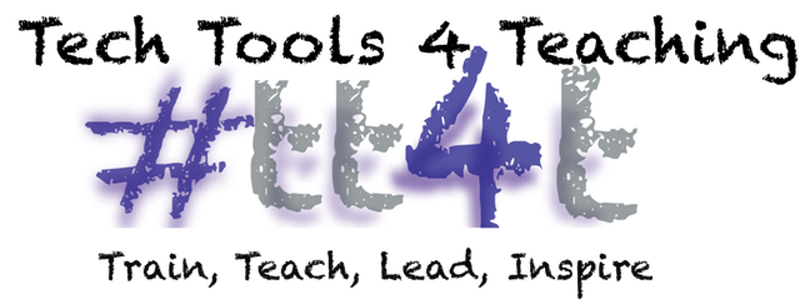1. Since the iPads have rolled into the classroom, our students have been rolling in earlier and earlier to get the day started. They grab their iPads and are off playing multiplication and fractions apps anywhere from 1-10 minutes BEFORE the tardy bell rings. How great that we found a way to increase both time on task and increase our class time! It is such a wonderful way to start the day when everyone is fully present, ready to learn, and having so much fun with math.
Below is a video of student working away before class even started!
2. Google and iPads is a great combination. Daily bell ringers using a Google Form and Flubaroo is really working out well. Advantages to the Google Form are: ALL students must complete all of the questions every day, all students get immediate feedback, all grades are returned immediately and electronically, and there is no math downtime. When the bell ringer is complete, students transition to Fast Facts Math app and get in a great practice with the basics facts.
| Paper Pencil Bellringer | Google Forms + Flubaroo + Mail App |
| Students work on bell ringer at their own pace. | Students work on bellringer at their own pace. |
| When finished, student waits. After 3-5 minutes, the teacher goes over the answers. | When finished, students hit submit and then check e-mail for results. While waiting, students use the Fast Facts Math App to review the basics. |
| Some students just write down the answers w/o doing the work as the teacher goes over them. | All students must do all the problems. Everyone gets feedback. Focus is on solving the problems not waiting for everyone to finish. |
3. Doceri had been the perfect app for students to use for taking notes, doing homework, and creating screen recordings. Screen recordings of homework give both us and the students valuable feedback to versus what we glean from paper and pencil. Hearing the kids explain their work immediately tells us what they know and what holes they have in their comprehension. Screen recordings give every student a voice. In the classroom before iPads, only a few people can be called on to give an answer. Now, every student explains at least one answer every day. The way to get better at anything is by doing. Watching us solve problems on the board does not increase their success solving fractions. It is in doing they learn and by explaining they understand. We find that their comprehension of the topic is directly proportional to their explanation. Even if the answer is correct that does not necessarily mean mastery. Because students have to explain to us how they came up with the answer, we have a better pulse on their level of understanding. Click the video below to see a screen recording.
4. E-mailing homework is very fast, efficient, and is an effective way to provide personalized feedback. The e-mail is individualized, immediate, and easy to access. Instead of wasting valuable time passing back a papers, students tap the mail app and they have their message. Students create the work in Doceri and send the slide as a PDF. Simple to share!
Sample Work:
E-mail to the student from Mrs. Stukenholtz over the work above:
“#1- looks good!
#2- You made a mistake on both fractions when converting. 2/3 = 12/18 (multiply both by 6) and 1/6 = 3/18 (multiply both by 3.) Also, consider using a smaller LCM, or common denominator. 6 would have worked.
Try these again for a higher grade. “
5. Appytime is fantastic. During this time, students explore math concepts with a variety of apps. Leveled apps make it simple to differentiate to meet the exact student needs. Student are self differentiating and have learned a lot about self-control!
6. The kids are quickly transitioning between activities with the iPads. Now time on math is at an all time high! Paper shuffling is no longer existent! The iPad has been a wonderful tool for organizing student notes and work!
Written by: Ann Feldmann










